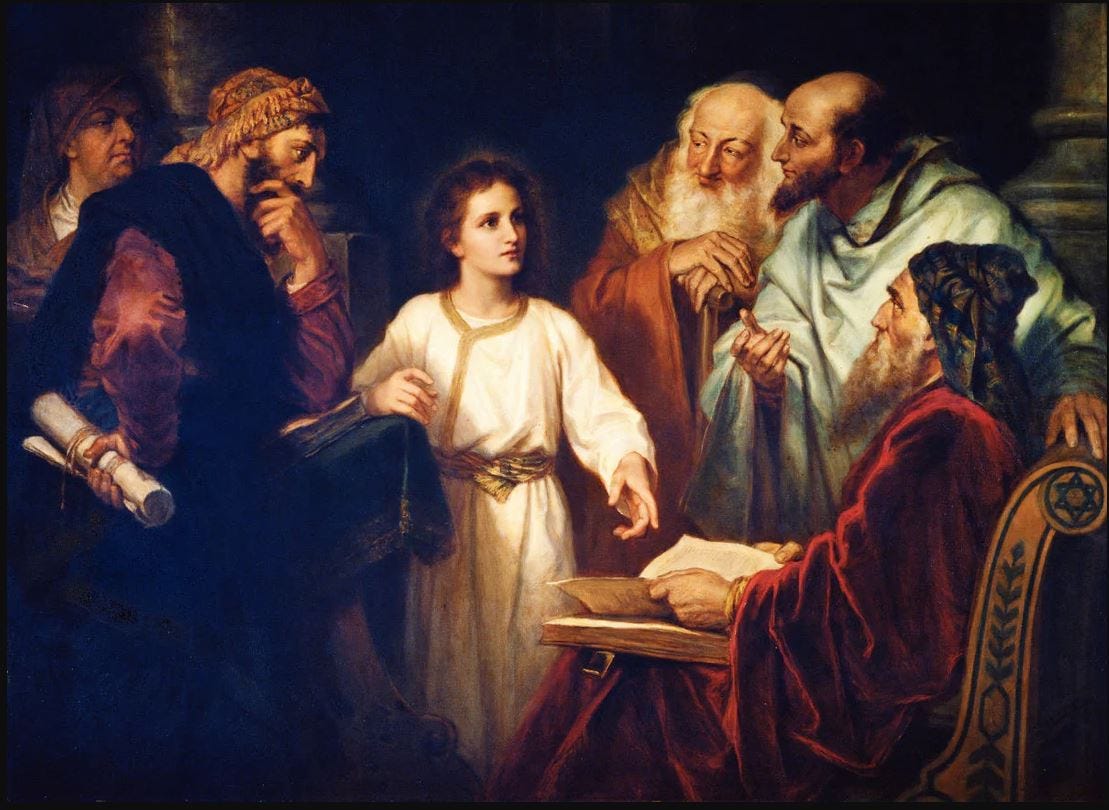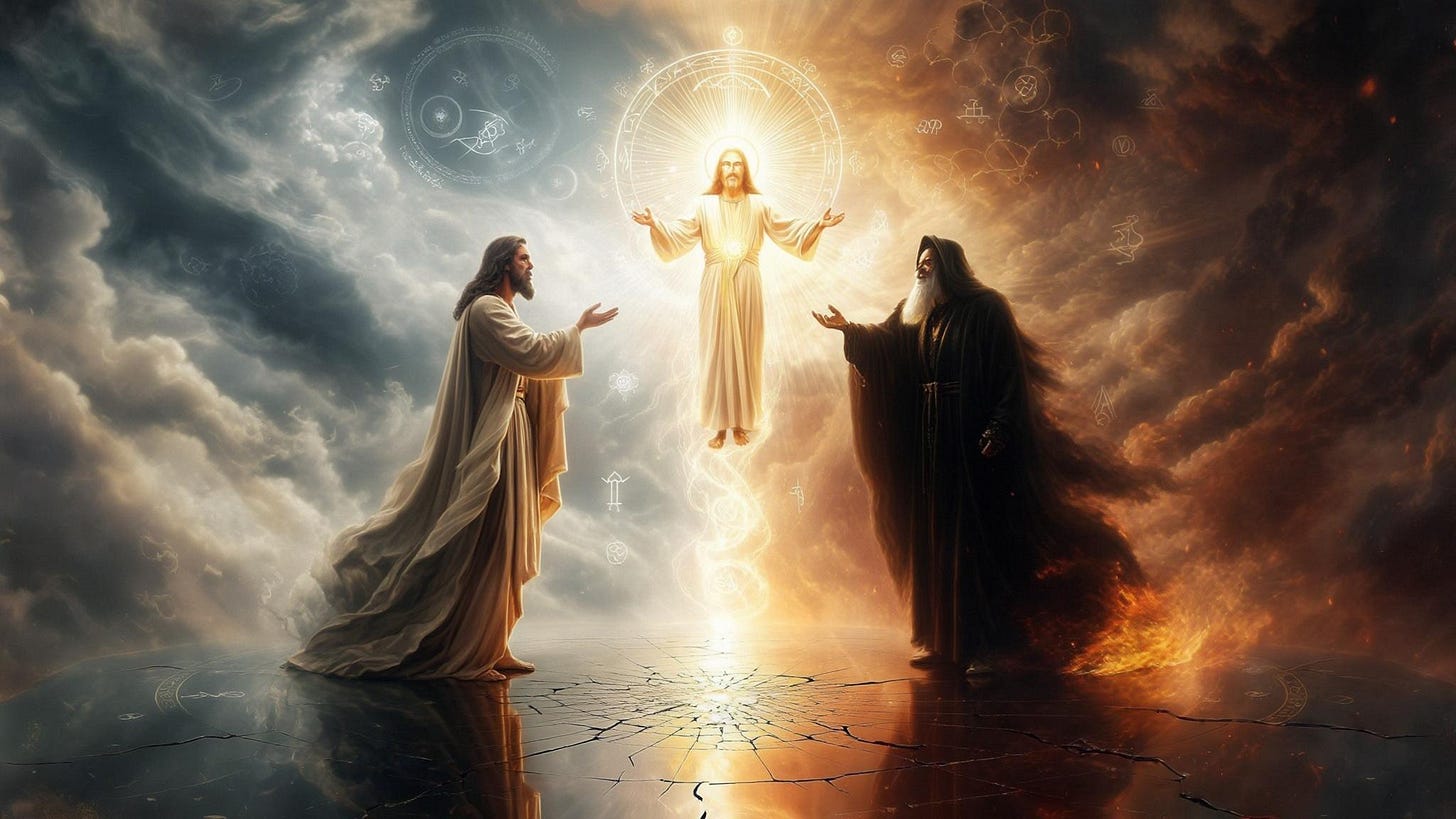Douglas and I have gathered a group of anthroposophists in our Invisible College with the purpose of teaching Rudolf Steiner’s spiritual science to esoteric Christians and spiritual seekers around the world. Lately, I have noticed many newcomers to our teachings and have been using my Substack blog page to review some of the basic concepts which might help navigate Steiner’s immense work.
The first Steiner book I read was Knowledge and the Higher Worlds, which I explained here: From Ordinary to Extraordinary: My Spiritual Evolution Guided by the Teachings of Rudolf Steiner. My next step was joining a study group with long-time anthroposophists who were from the New York and Chicago branches but had retired at ‘Top of the World’ in Clearwater, Florida. There I was introduced to Steiner’s books Theosophy, Occult Science, and assorted lectures regarding the Bible, including The Fifth Gospel where I learned about the two Jesus children.
As we celebrate Easter today, a time of renewal and resurrection, it is fitting to explore the profound teachings on the "two Jesus children." This concept, central to Anthroposophy, offers a deeper understanding of the incarnation of Christ and its significance for humanity. By delving into Steiner’s insights, we can enrich our celebration of Easter with spiritual wisdom that connects the historical event of the resurrection with the ongoing evolution of the human soul.
The Two Jesus Children
Rudolf Steiner presented a unique perspective on the birth of Jesus Christ, drawing from esoteric Christian teachings and the Gospels. In his lectures, particularly in From Jesus to Christ (GA 131), Steiner speaks of two Jesus children, each with distinct lineages and spiritual backgrounds, as described in the Gospels of Matthew and Luke.
As a budding anthropop, I found this topic exciting, but also confusing because I couldn’t keep the lineages organized in my head and was unfamiliar with this spiritual concept. Many times Steiner students draw charts to help explain and understand spiritual concepts.
Here is a chart I made for you in case you would like to explore this topic.
The Solomon Jesus-child:
Descended from the royal Solomon line of the House of David, as detailed in the Gospel of Matthew.
Embodied the individuality of Zarathustra, the ancient Persian prophet who brought light and wisdom to humanity through previous incarnations.
Represented the pinnacle of pre-Christian spiritual development, with a highly developed intellect but also human liabilities to error, reflecting the challenges of earthly evolution.
Steiner notes that this child’s body was suited for advancing Zarathustra’s faculties in a youthful, powerful organism.
The Nathan Jesus-child:
Originated from the priestly Nathan line of the House of David, as described in the Gospel of Luke.
His astral body was illumined by the forces of Gautama Buddha, carrying impulses of love and compassion.
His physical body was from the noblest ancient Hebrew blood, making it an ideal vessel for the Christ.
At birth, he spoke in a mysterious language understood only by initiates, voicing the primal mysteries of the earth, with his mother as the sole comprehender.
A pivotal event occurred at age 12, as recounted in the Gospel of Luke (Luke 2:41–52), when the individuality of Zarathustra from the Solomon Jesus transferred to the Nathan Jesus.
This unification blended wisdom (Zarathustra) and love (Buddha), preparing the Nathan Jesus to receive the Christ at the baptism in the Jordan. Steiner’s teaching reconciles the contradictory genealogies in Matthew 1:1–17 and Luke 3:23–38, and that the two Jesus children were distinct spiritual beings whose union facilitated the Christ incarnation.
The Easter Connection
The Easter mystery celebrates the resurrection of Christ, an event that Steiner viewed as transformative for human evolution. Steiner explains that the Christ being, who incarnated in the body of Jesus of Nazareth, introduced a new impulse: the possibility of overcoming death and achieving spiritual freedom.
The two Jesus children were instrumental in this process:
The Solomon Jesus, with Zarathustra’s individuality, represented the culmination of pre-Christian wisdom, embodying the intellectual and spiritual achievements of humanity.
The Nathan Jesus, with Buddhist impulses, provided a pure vessel of love and selflessness, untainted by earthly cultural influences.
Their union enabled the Christ to enter earthly evolution. At the baptism in the Jordan, the Christ being replaced the human Ego in Jesus, allowing for the full incarnation of divine love and wisdom. This culminated in the Mystery of Golgotha—the crucifixion and resurrection—where Christ’s sacrifice offered humanity a path to spiritual rebirth.
Steiner emphasizes that the resurrection was not merely a physical event but a spiritual victory, enabling humans to connect with the “Phantom” body that rose from the grave, a spiritual archetype for all humanity. Easter thus becomes a celebration of this transformative impulse, made possible by the unique preparation of the two Jesus children.
The Calendar of the Soul and Easter
Steiner’s Calendar of the Soul provides 52 weekly verses to align the human soul with the rhythms of nature and the cosmos, fostering a sense of unity with the world Calendar of the Soul. The cycle begins anew each Easter with verse 1, which resonates with the theme of resurrection:
When out of farthest worlds
The sun resounds in springtime tone,
And light’s creative call
Draws forth the plants from earth’s deep heart,
Then I feel how senses’ power
Is born of soul’s delight,
And spirit’s warmth would fain unfold
In cosmic being’s radiant glow.
—Translated by Daisy Aldan
This verse reflects the soul’s awakening to cosmic forces, mirroring Easter’s theme of new life emerging from death. It invites practitioners to experience Easter as a time of inner renewal and connection with the divine.
During Holy Week, verse 52 is meditated upon, focusing on inner reflection and preparation for Easter’s transformative events:
When from the depths of soul
The spirit seeks to send its light
Into my being’s core,
Then do I feel the power divine
That from my soul’s own depths
Would raise me to a life divine.
—Translated by Daisy Aldan
These meditations deepen the spiritual experience of Easter, aligning the soul with the rhythms of Holy Week and the resurrection. Steiner noted that the Calendar of the Soul is “organically connected” to Anthroposophy, guiding the soul toward the living.
As we celebrate Easter, the teaching of the two Jesus children invites us to deepen our understanding of the resurrection as both a historical and spiritual event. The Solomon and Nathan Jesus children, through their unique contributions, prepared the way for the Christ incarnation, enabling the Mystery of Golgotha to transform human evolution.
By engaging with Steiner’s insights and the meditations of the Calendar of the Soul, we can experience Easter as a time of inner transformation, where the soul reconnects with the divine impulse of Christ. This perspective enriches our celebration, offering a path to spiritual freedom and renewal in the light of the resurrection.
Wishing you a blessed Easter,
Tyla and Douglas










Blessings this Easter Sunday.
Thank you Tyla and Douglas as always,.
The Christ is Risen.
But which one Luke or Matthew...
Below is a link to the first part of a three part lecture about the two Jesus children, for those who wish.
Intro to Esoteric Christianity, Part 1: Anthroposophy Course (Brian Gray)
https://youtu.be/_ppivCf460I
I woke up so fuzzy around my memories of the two Jesus children and tried to recall ..then I saw your post, Tyla! Thank you. If you feel called, it would be lovely to see the chart filled out with the parents and how the families combined. I’d like to get that organized in my head too.